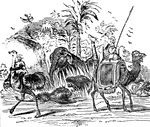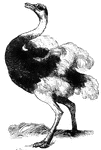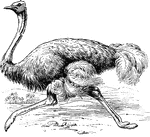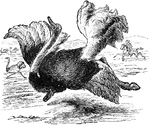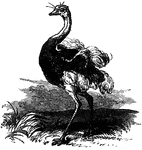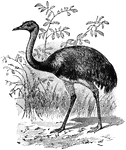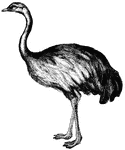Clipart tagged: ‘ostrich’
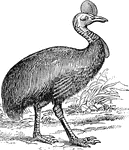
Cassowary
A large running bird native to New Guinea and northeastern Australia. A relative of the ostrich.
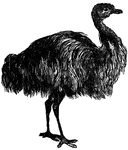
Emu
The Emu, a native of Australia, is nearly as large as the Ostrich, but has shorter legs and neck and…
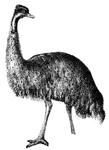
Emu
The Emu, a native of Australia, is nearly as large as the Ostrich, but has shorter legs and neck and…

Kiwi
The Kiwi, a native of New Zealand is closely related to the Ostrich but much smaller. It is also a flightless…
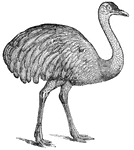
Ostrich
This south American ostrich can not fly, the wings being small; but it is a swift runner, equaling a…
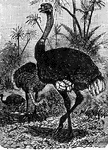
Ostrich
"The Ostrich is the largest of all living birds, standing from six to eight feet in height, and has…
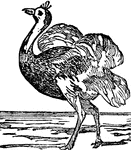
Ostrich
A large bird, nearly ten feet high, having a long neck, stout long legs, with only two toes, and short…

Ostrich
The ostrich is a flightless bird native to Africa. They are distinct in their appearance, with a long…
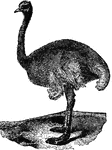
Ostrich
A genus of cursorial birds, of which it is the type. They are native to the deserts of Africa and Arabia,…

Ostrich
"Struthio camelus, the Ostrich or "Camel-bird" of North Africa now extends from Barbary to Arabia, and…

The Skull Structure of an Ostrich
"Dromaeognathous skull of ostrich, nat. size specimen no. 16,629, U.S. Nat Museum, by Dr. R. W. Shufeldt,…
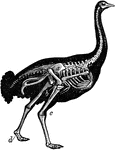
Skeleton of Ostrich
"Shows the powerful legs, small feet, and rudimentary wings of the bird; the obliquity at which the…
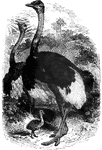
Ostriches
A large, flightless bird, the ostrich measures six to eight feet tall, and is native to the sandy desert…
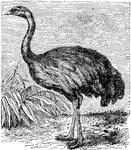
The Rhea
Also called the American Ostrich. "It inhabits the pampas of South America and the coolest valleys in…
